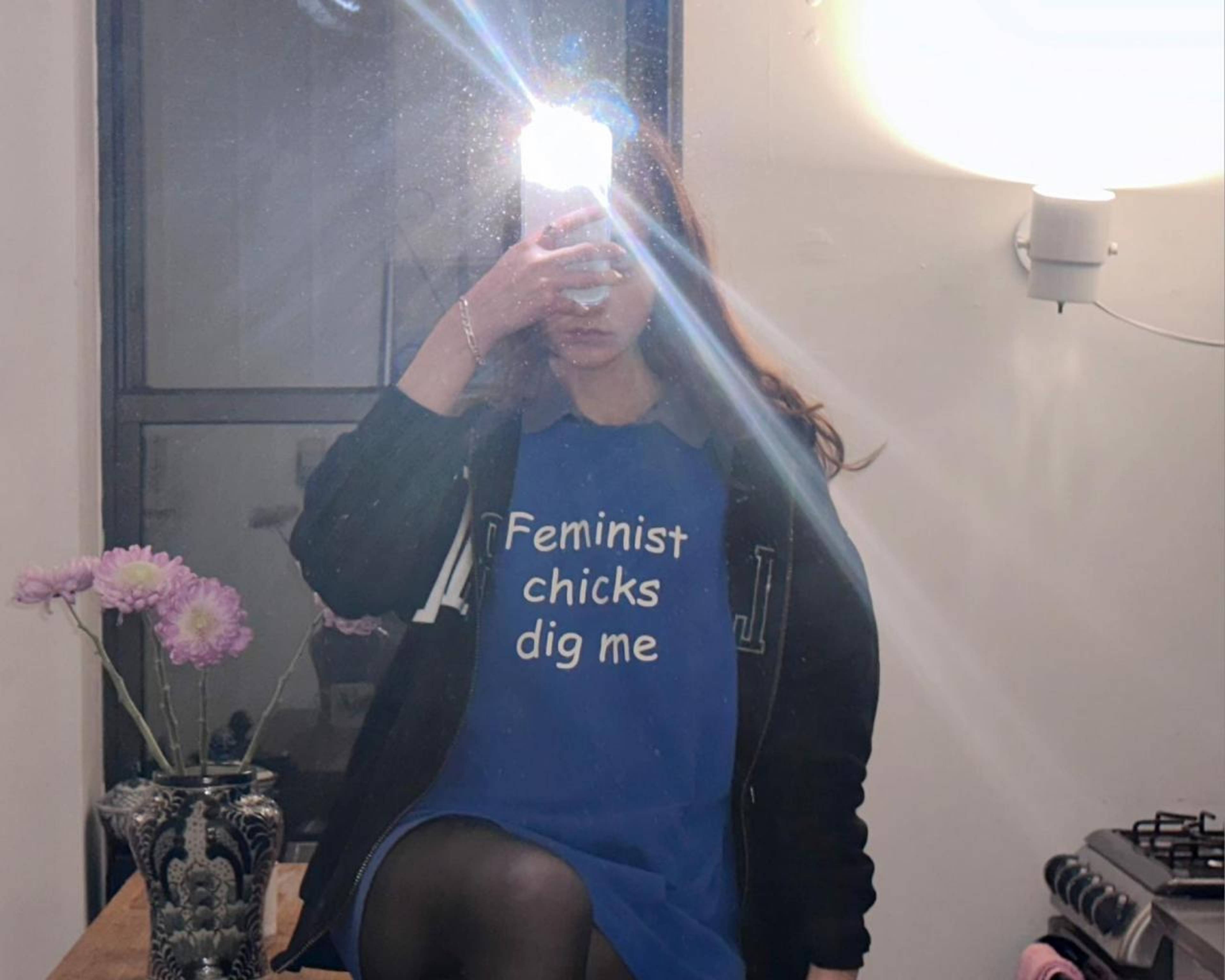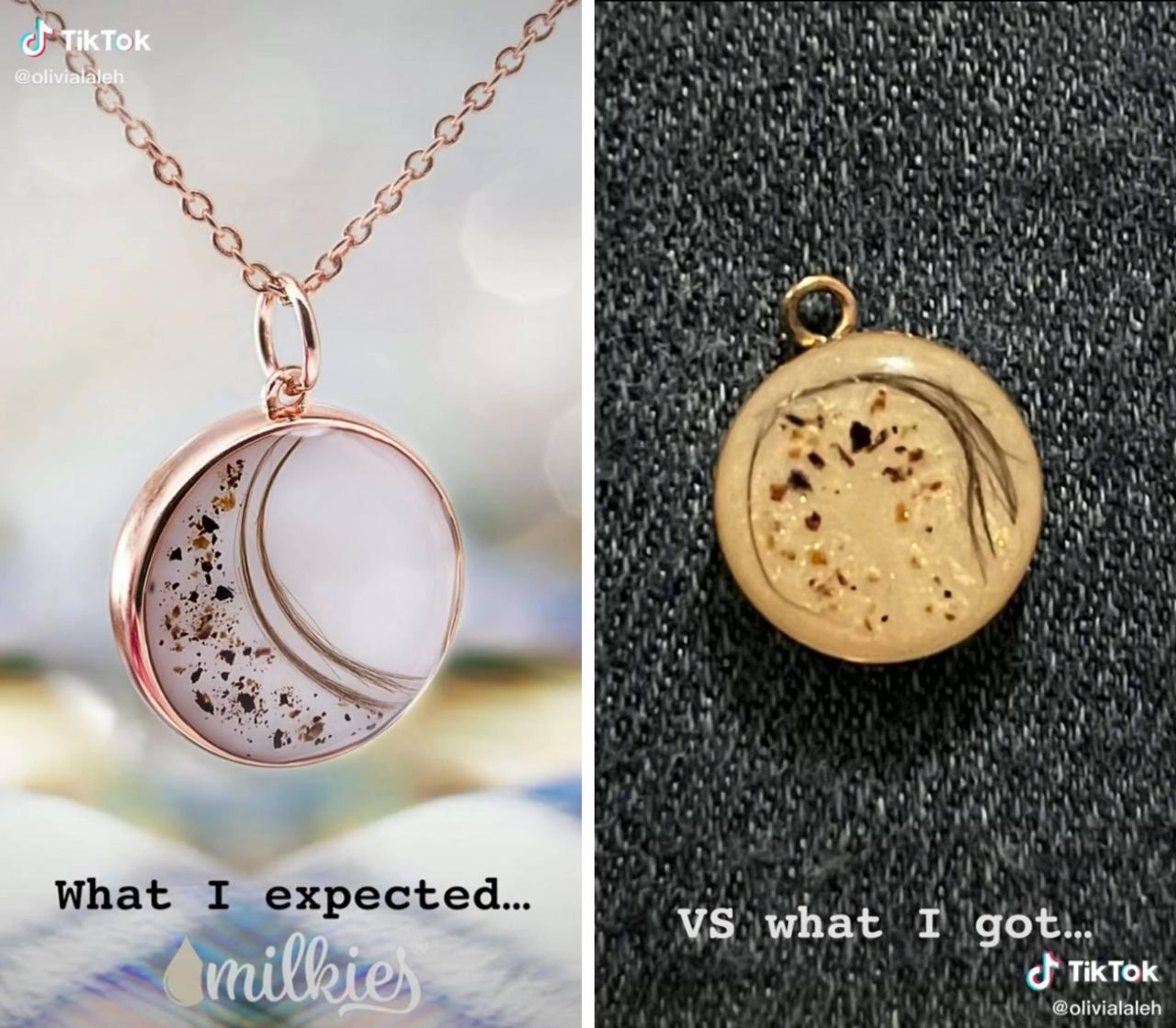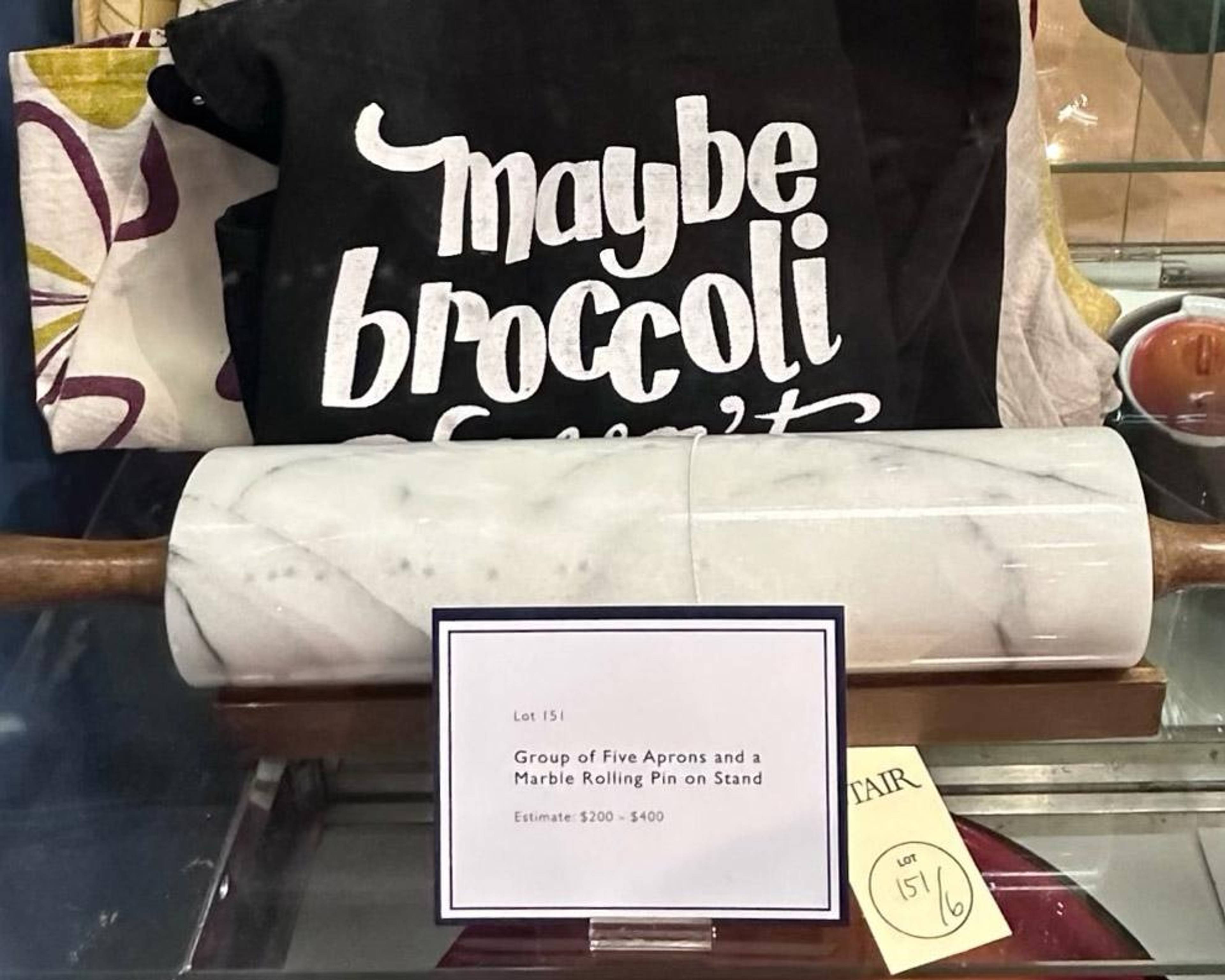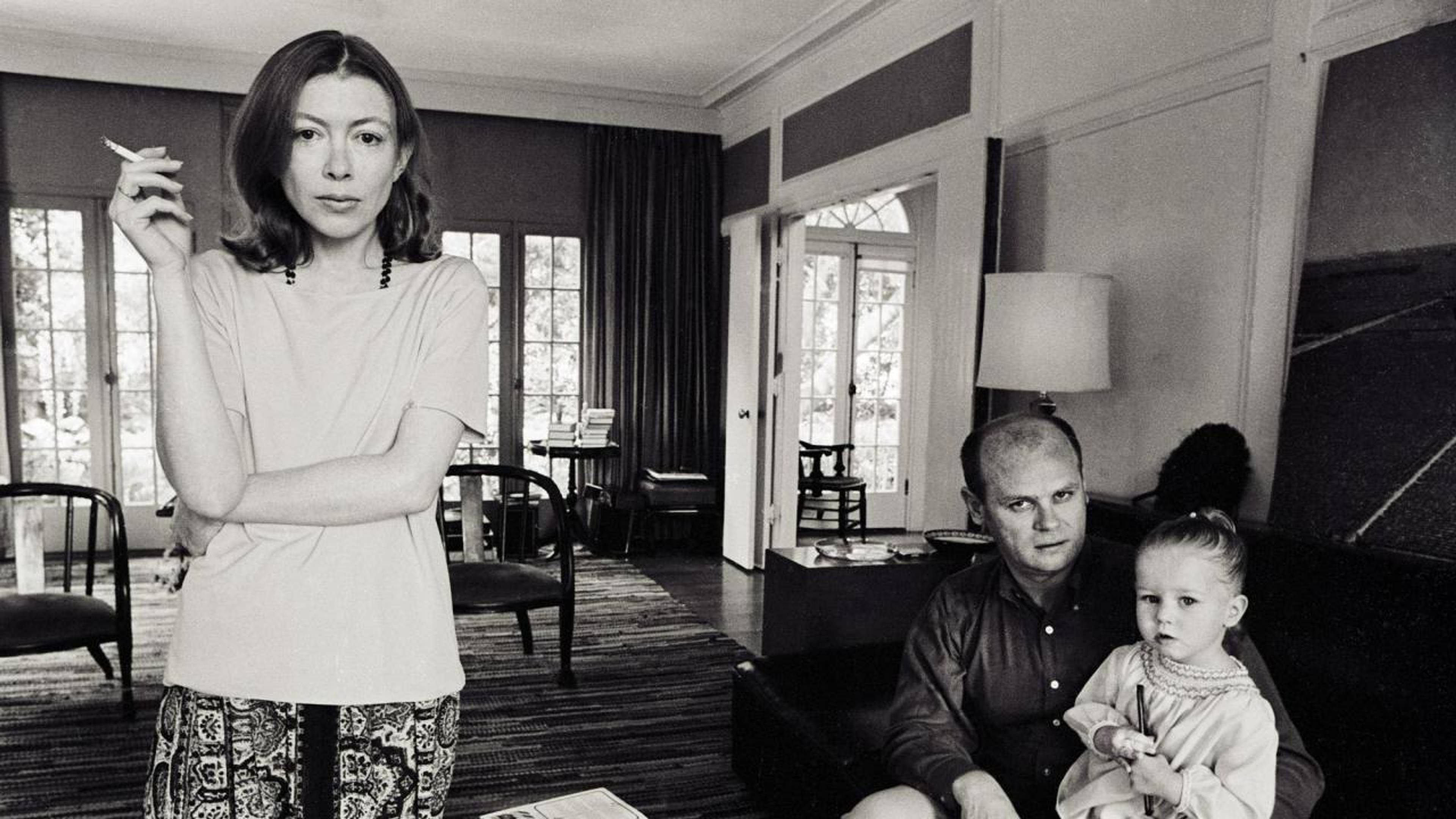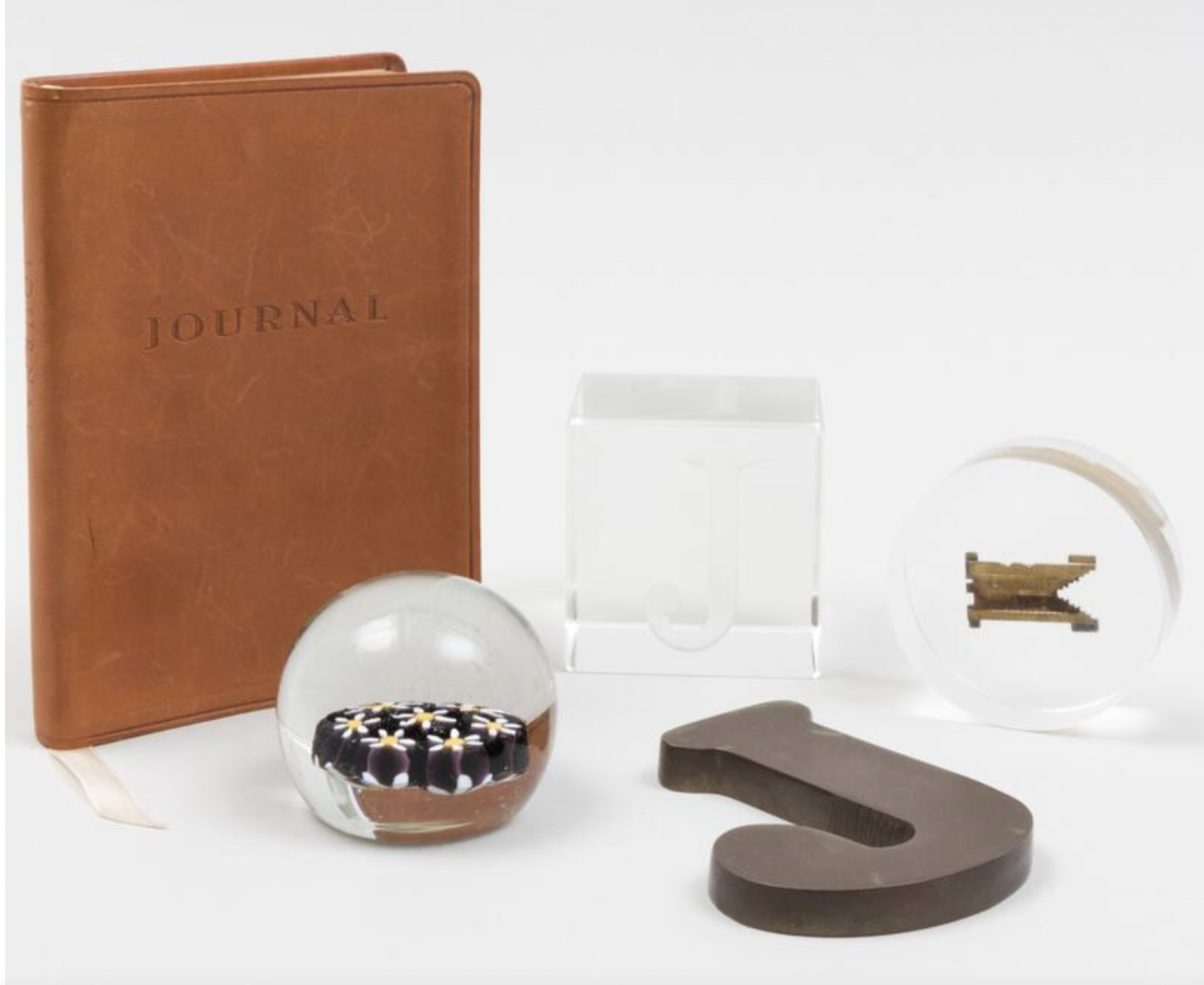Last month, after Kris Jenner’s hip-replacement, Kim asked the surgeon to save the excised hipbone so she could make jewelry out of Kris’s femur. Kris called Kim’s idea “creepy,” but Khloé reminded Kris of her wish to be cremated and have her ashes made into necklaces for her children and grandchildren. This, Kris maintained, was “a great idea.”
When the Victorian Era ended and people stopped accessorizing so much with human remains, Walter Benjamin worried society had lost touch with the meaning of life. He thought proximity to death was an existential lubricant for access to Meaning and, without it, the overly-sanitized 19th century bourgeoisie would never deeply penetrate Life. He said we’d become “dry dwellers of eternity” (The Storyteller, 1936).
On the drive to Joan Didion’s estate sale exhibition at Stair Galleries in Hudson, New York, I watched a TikTok about breastmilk jewelry – a budding e-commerce niche allowing nursing mothers to dehydrate ten to fifteen milliliters of breastmilk and transform it into “gemstones.” A woman shared her experience ordering two milk-laden pendants. Both failed to capture her desired lacteal secretion aesthetic. First, the clarity of the milk was so bad she couldn’t see the added umbilical cord dust “at all.” Then, the lock of her baby’s hair that she’d requested to be overlayed in the resin, looked, she felt, somehow both “too thick” and “too stringy.” She wanted her daughter’s hair and umbilical to look less dejected, more whimsical. Like something she’d find by the register at Anthropologie. Other moms should look at her baby’s detritus and wish it was theirs.
Breastmilk Jewelry Expectation vs. Reality, @olivialaleh, TikTok, 2022
I wonder where we’re at, culturally, in terms of wetness vis-à-vis eternity and if we can cosmically rehydrate via commemorative relics.
On November 16, Joan Didion’s faux tortoise-shell Céline sunglasses – a style currently retailing for $440 on Sunglass Hut – sold for $27,000. Multiple people paid $11,000 for her blank notebooks. Trash bins sold for $5,500. $2,500 for a white Le Creuset set that’s seen better days, $8,000 for a red one. $3,250 for some Norman Mailer books, $4,250 for Roth, $4,000 for Updike, and $15,000 for Didion’s own Didion (mix of hard and soft cover).
We were sort of going ironically (per dry dwelling), insofar as the ultimate subversion is a 360° rotation back to the mainstream (per the law of conservation of mass, wetness can neither be created nor destroyed only rearranged in space). Anyway, the exhibition was too depressing to be kitsch. The room was painted, as my friend said, “community center blue.” There was, as an architect I met there said, “a pathetic diorama situation.” Lot numbers handwritten on manila tags were tied with string around Joan Didion’s things. I might have been more convinced by the transubstantiation of Didion via a box of seashells and pebbles if the presentation didn’t feel so provincial, or, as my friend said, per the wall color, municipal.
The chiaroscuro of Didion’s extruding scapula sending ripples down the boatnecks of her cashmere.
“What is this business about ‘shopping, typing piece, dinner with ‘E’, depressed?’ Shopping for what? Typing what piece? Who is E? Was this ‘E’ depressed, or was I depressed? Who cares?” (“On Keeping a Notebook,” 1968)
The ‘quirky’ pieces didn’t track. The elephant side tables felt forced. The punchline of Joan Didion’s novelty broccoli apron was cut off because of the way they’d folded it in the display case. All you could see was Maybe broccoli.
Lot 151, Collection of Joan Didion, 2022. Photo: Cara Schacter
Whenever I cook something without a clear-cut identity (ex. puréed soup), I consider what would happen if I were to die before eating it. In case of post-mortem leftovers, I label any remotely vague victual lest someone clear out my fridge and the texture of my legacy becomes an ambiguous mush – creepy . But a distinct leek soup? In the fridge of a dead girl? That’s a great idea.
This is because specificity is the easiest way for a writer to look chic. Didion’s always like: “Beth Israel North”- this, “the Cornell wing of Columbia-Presbyterian”-that. She’s obsessed with Cedars-Sinai. She’s like:
“‘It’s not black and white,’ a young doctor from Cedars-Sinai Medical Center in Los Angeles had told me, in 1982, about the divide between life and death.”
(The Year of Magical Thinking, 2005)
You can take a nothing sentence, add specificity, and it’s chic.
“…she does not stop until Jane Lisch appears with a jar of Gerber’s Junior Chicken Noodle Dinner.”
( Slouching Towards Bethlehem , 1968)
That’s how you make things more interesting than they are. That’s how you get dimension and shadow. It’s about being pointed. The chiaroscuro of Didion’s extruding scapula sending ripples down the boatnecks of her cashmere.
One wonders if Didion would have had the same literary effect with a higher BMI. Integral to her schtick is the way she made everyday things seem unbearably heavy. As the story goes, she was basically tossing arugula when everyone she cared about died. In pictures of her smoking, she appears to barely manage the weight of a cigarette, often supporting the load-bearing arm with another limb or some surface. Her ethereal little head dominated by chunky plastic Céline’s.
A gallery employee said many visitors were surprised by how small the chairs were but that “we have to keep in mind Didion’s tiny ass.”
Joan Didion with her husband John Gregory Dunne and their daughter Quintana Roo Dunne at home in Los Angeles in 1968. Photo: Julian Wasser
Joan Didion in front of her Stingray Corvette, 1968. Photo: Julian Wasser
“My only advantage as a reporter is that I am so physically small, so temperamentally unobtrusive …”
(Slouching Towards Bethlehem)
The architect asked if I was religious. We were looking at a horn handled magnifying glass and a metal ‘J’ paperweight. He said we were standing in the Catholic Church, that the whole thing was so Catholic. I explained that I’m Jewish but that, for most of tenth grade, I had a daily ritual that required me to brush a Sex and the City DVD case against various surfaces of my bedroom in an attempt to transfer its essence. So, while I’ve never taken communion per se, I sympathize with the theoretical sanctity of Didion’s ice bucket.
But even for someone diagnostically predisposed to feeling compelled towards and overcome by inert objects, this stuff wasn’t numinous. A Loro Piana shawl (sold for $7,500) hung limply over a fruitwood swivel desk chair (sold for $14,000) topped with a frumpy seat cushion (sold for $3,750). The architect said that never again would so much of the American icon’s stuff be in one room at the same time. I tried to let that sink in. But the constellation of blown glass table bells and lacquer tray tables were categorically untriggering. The center could not hold, etcetera.
Lot 72, Property from the Collection of Joan Didion, Bidsquare, 2022
We left the gallery and walked towards the Hudson River. A cardboard box of $1 items outside White Whale Limited Antiques caught my eye: plastic tortoise shell headband, empty Pez dispenser, kerchief. We went in. There was a collection of antique pharmaceutical jars, ornately framed oil paintings of little Austrian boys with their dogs, glass grapes. On our way out, my friend pulled, from a wicker basket, a DVD case: Sex and City , season two.
“Remember what it was to be me: that is always the point.”
(“On Keeping a Notebook,” 1968)
On the drive home, we listened to a song called “Who’s Dick Is This” by Princess Di. Willard and I thought the lyrics were asking: “whose dick is this?” As in, a literal question in which the narrator tries to identify the body attached to a given dick. Ed and Nastassia interpreted it as a rhetorical “who’s your daddy?”-type question, which is to say that the dick “belongs” to someone other than its actual embodied owner. Abby imagined a Richard, as in: “Who is Dick? Is this?” Grammatically, the title makes no sense – there should be a comma after “dick.” Alas, the song raises a bigger question about the act of interrogation itself. This is about the slippery nature of being cosmically wet. About how any attempts at meaningful penetration are ultimately a “relentless succession of moments during which we will confront the experience of meaninglessness itself.” ( The Year of Magical Thinking )
In another TikTok, the woman with the breastmilk jewelry mishap said that, even though she was no longer breastfeeding, it wasn’t too late to try for another pendant. She was going to get her pump out of storage and start pumping again. Some companies say you only need one teaspoon of milk to make a gem. Hopefully they make it less “thick” and “stringy” this time. Hopefully they immortalize her baby’s hair in a way that looks so thin and specific she won’t even know who’s hair is this.
@violentlyepic, Instagram, 2022


